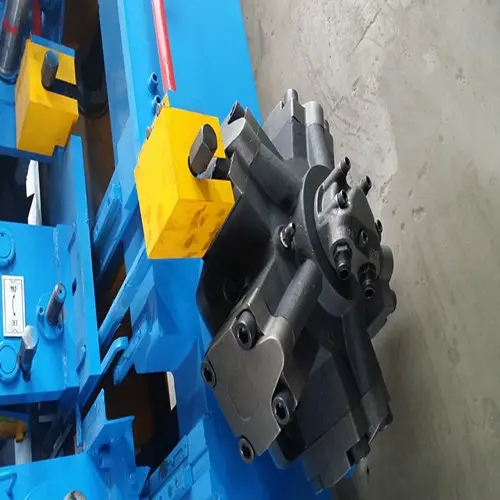
Understanding the Good Forming Effect of Furring Channel Roll Forming Machines
In the realm of construction and architecture, furring channels play a crucial role in the mounting and support of various finishes, including drywall, sheathing, and insulation. These metal channels are essential in creating a stable framework that not only enhances structural integrity but also improves aesthetics and energy efficiency. At the heart of the production of these furring channels lies the furring channel roll forming machine, a technology that has revolutionized the construction industry.
Roll forming is a continuous bending operation where a long strip of metal is passed through a series of contoured rolls to create a desired cross-sectional profile. The furring channel roll forming machine is specifically designed to produce channels that meet the precise dimensions required for various applications. The good forming effect of these machines is attributed to several key factors, including precision engineering, material quality, and the operational parameters of the roll forming process.
Precision Engineering
The design of the roll forming machine is crucial for achieving the good forming effect. High-quality machines are engineered with tight tolerances to ensure that the resulting furring channels are consistent in shape and size. This precision is vital, as any deviation could affect the installation process and the performance of the final structure. Modern furring channel roll forming machines are often equipped with advanced computer numerical control (CNC) systems. These systems allow for automated adjustments to be made swiftly, catering to different design specifications without sacrificing accuracy.
Material Quality
Another critical factor in achieving the good forming effect is the quality of the raw materials used in the roll forming process. Typically made from steel, galvanized metal, or aluminum, the choice of material significantly impacts the channel's strength and durability. High-strength materials enhance the load-bearing capacity of the furring channels, ensuring they can support the weight of finishes and insulation. Moreover, quality materials reduce the likelihood of defects such as warping or cracking during forming, which can compromise the structural integrity of the channels.

Operational Parameters
The operational parameters of the roll forming process also play an essential role in the formation quality of the furring channels. Factors such as roll speed, feed rate, and temperature need to be meticulously controlled to achieve optimal results. Adjusting these parameters allows manufacturers to address the specific requirements of different projects, whether it be standard channels for residential applications or custom profiles for commercial constructions.
Benefits of Furring Channel Roll Forming Machines
The utilization of furring channel roll forming machines offers numerous benefits. First and foremost, the production efficiency is significantly improved compared to traditional methods. Roll forming allows for the continuous production of channels, minimizing material waste and reducing production time. Furthermore, the automation involved in modern machines reduces labor costs and the potential for human error, leading to a more streamlined manufacturing process.
Additionally, the good forming effect ensures that the furring channels produced are not only functionally sound but also visually appealing. This is particularly important in projects where aesthetics are a priority. Well-formed channels create a seamless appearance once installed, contributing to the overall finish of the construction.
In conclusion, furring channel roll forming machines represent a significant advancement in the construction industry, providing a reliable solution for producing high-quality furring channels. Their precision engineering, quality material usage, and controlled operational parameters contribute to the excellent forming effect that makes these machines indispensable in modern construction. As the demand for efficient and aesthetically pleasing building solutions continues to grow, the importance of these machines will only become more pronounced.